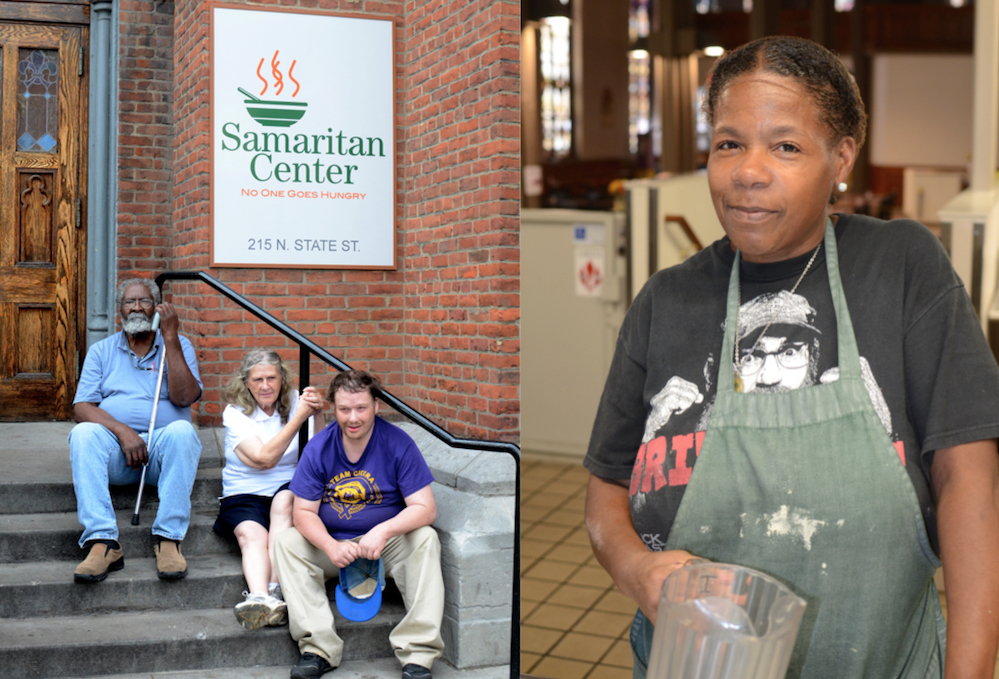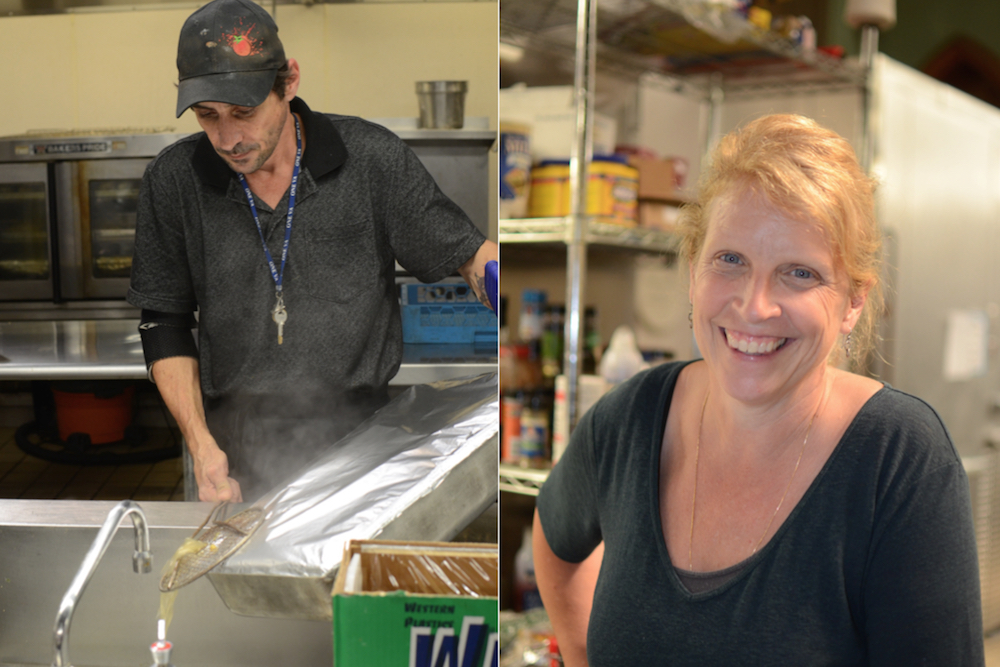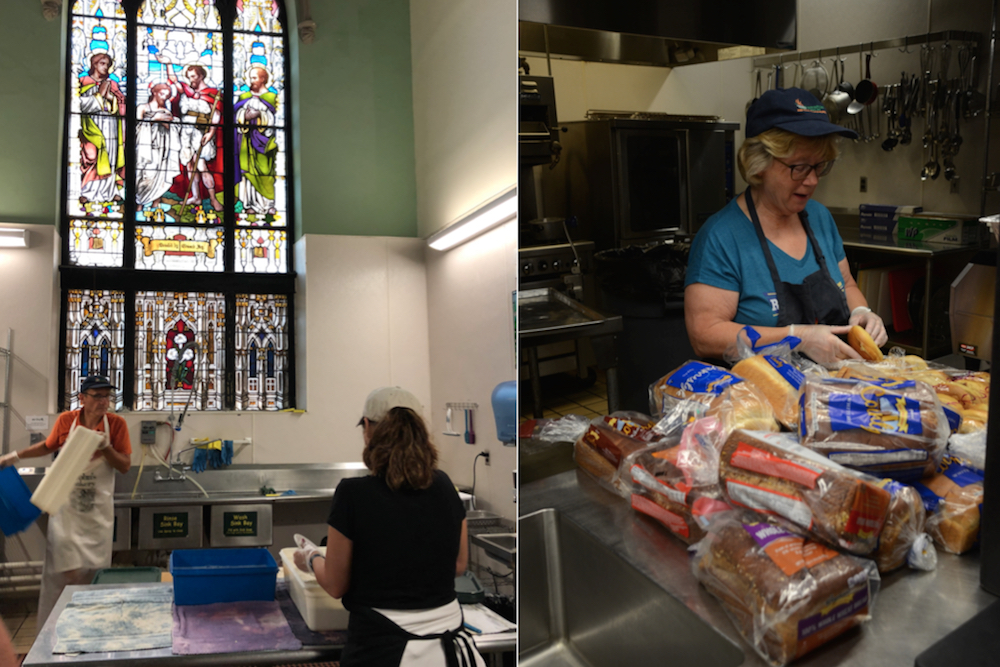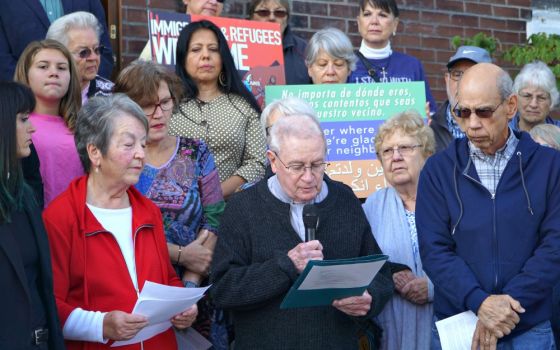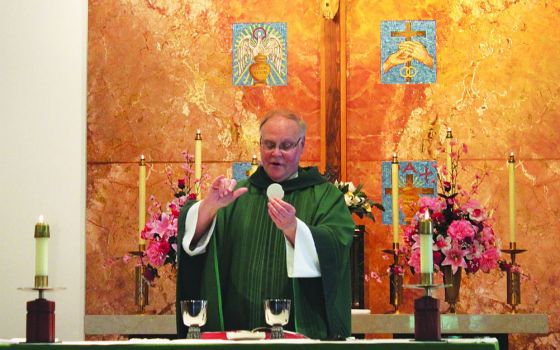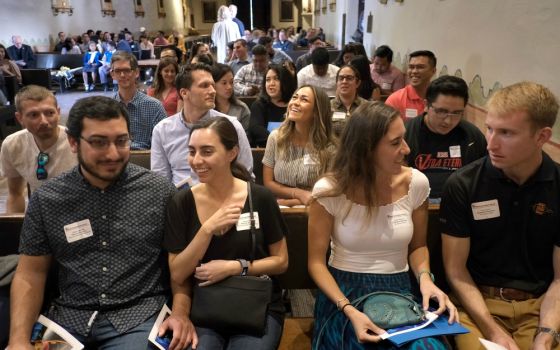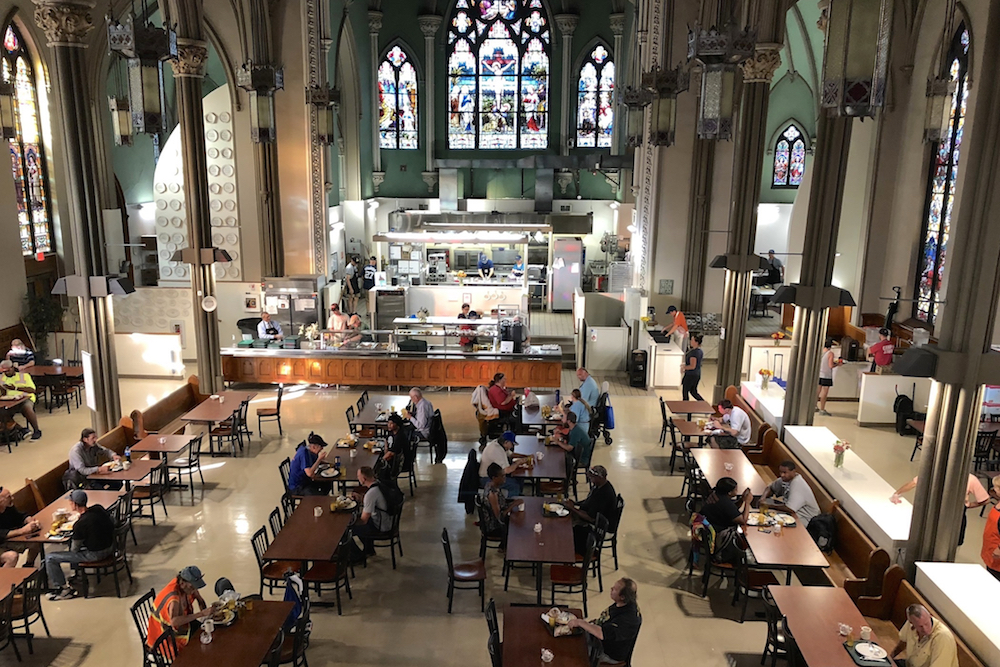
View of the Samaritan Center's "community kitchen table" from the choir loft (Jan Phillips)
St. John the Evangelist Church — the first cathedral in the Diocese of Syracuse, New York — was closed in 2010 due to underuse. It has since been purchased by the non-profit Samaritan Center and transformed into what executive director Mary Beth Frey calls "a community kitchen table."
They serve breakfast and dinner to 300 people a day with the help of 25 volunteers for every meal. At 6 a.m., volunteers show up to prepare breakfast, make coffee, serve the guests and clean up after the meal. Shortly after, another crew arrives to follow the same procedure.
"Our volunteers are so joyful," said Frey. "Everyone gives so much, but they receive so much in return. People connect with what's happening here — providing food with dignity, showing respect, offering services that go beyond the physical."
There is rarely a scarcity of volunteers at the center, where the ambiance is like a fine restaurant — real china, real silverware and vases of flowers everywhere.
Advertisement
The Samaritan Center has been serving meals to people since 1981, but always in a small church basement that was not accessible or large enough for their growing needs. When the organization looked for a new home, the gothic cathedral showed up on the radar.
The center launched a capital campaign in the summer of 2014, which raised $1.3 million in four months. It moved into the church in April 2015, which was purchased for $175,000 from the diocese, completed the renovations, and maintains a fund for ongoing maintenance.
"We went out with the message that this was a gift we need to give back to our community," said John Sindoni, Samaritan Center board chair.
The 1,500 volunteers who serve each month range in age from their 20s to 80s. The volunteers are student interns, retired lawyers, corporate executives, people who had been homeless and others. Huge quantities of food are donated by restaurants, grocery stores, distributors and churches. On Christmas day, all the meals and service are provided by a members of a local Jewish synagogue.
The center brings in professionals from community agencies to help people succeed in all arenas. Advocates from the local electric company help guests who have had their power shut off to negotiate workable terms. Employment specialists assist in job-readiness skills. Advocates help with veteran services, addiction and other mental health services and disability issues. The church provides enough space for a small children's area, a library, and a computer training center.
Only 17 percent of the regular guests are currently homeless, with 52 percent having been homeless in the last year. Michael Martini, 30, lost his job this year and has been volunteering at the center for two months.
"I used to be a guest, and this place saved my life, so I wanted to give back," he said. "Now I'm still a guest, but I serve people, too. It feels great to be part of this."
[Jan Phillips is an artist and author of several books.]
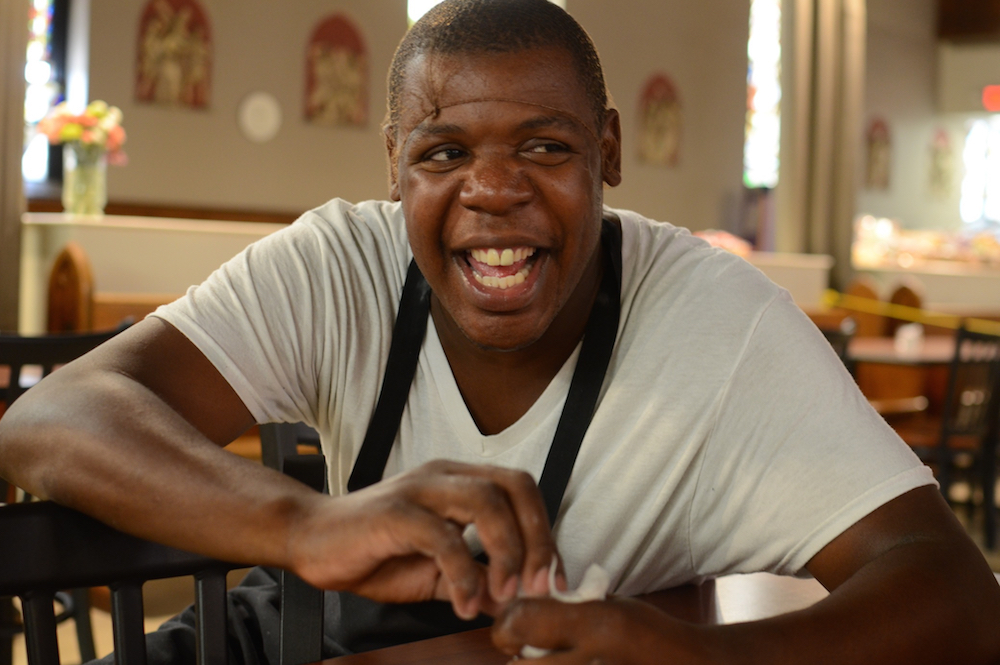
Samaritan Center provides a pre-vocational opportunity for Chris Bonner to prepare for a paid job in the community. "I'm learning how to work with people and pay attention to what’s important. I like to work and I like being here. They make me feel good." (Jan Phillips)
